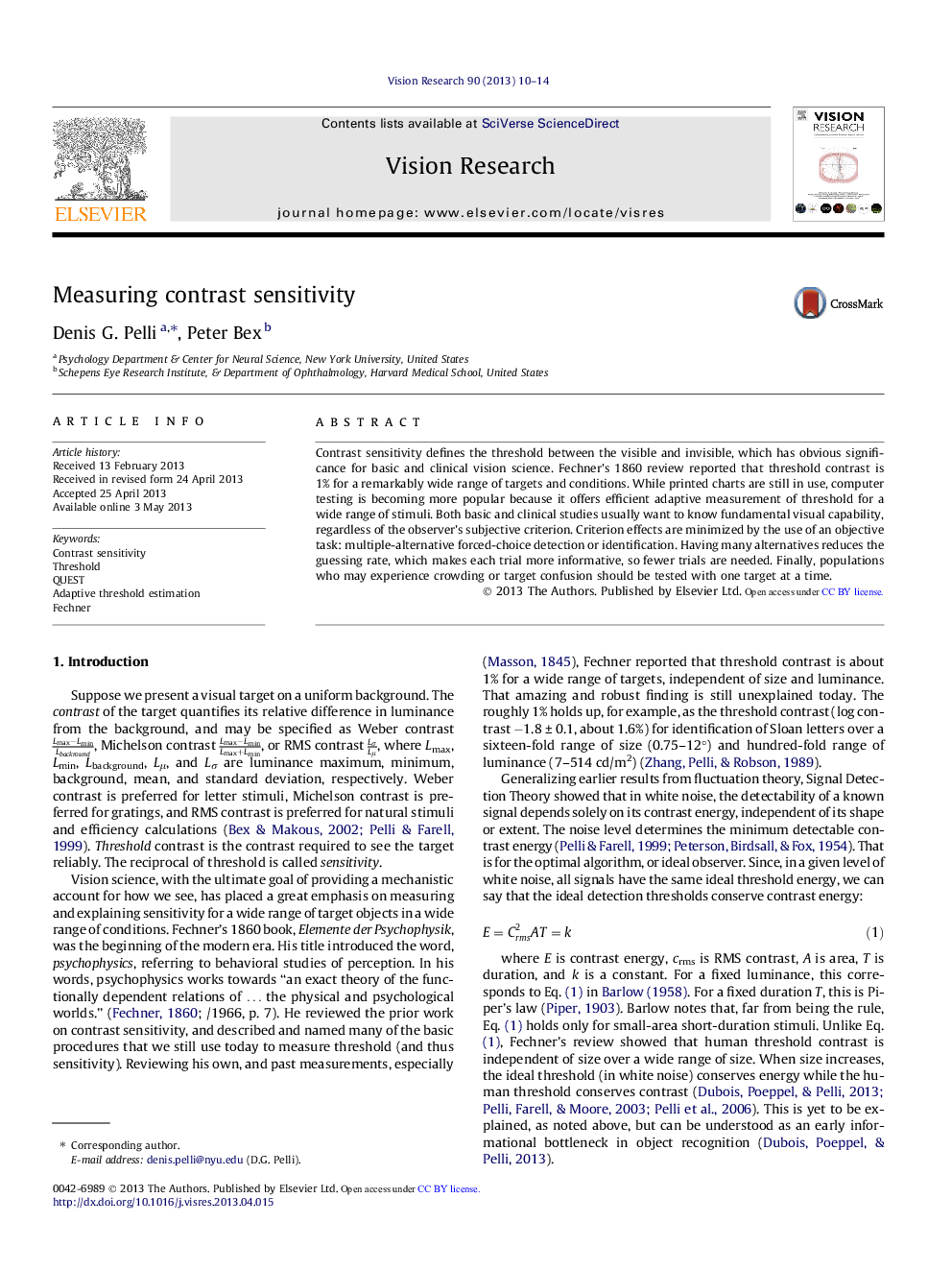| Article ID | Journal | Published Year | Pages | File Type |
|---|---|---|---|---|
| 6203575 | Vision Research | 2013 | 5 Pages |
â¢Contrast sensitivity defines the threshold between the visible and invisible.â¢Threshold contrast is 1% for a remarkably wide range of targets and conditions (Fechner, 1860; Masson, 1845).â¢While printed charts are still in use, computer testing allows use of efficient adaptive methods to accurately estimate threshold for a diverse range of stimuli and conditions.
Contrast sensitivity defines the threshold between the visible and invisible, which has obvious significance for basic and clinical vision science. Fechner's 1860 review reported that threshold contrast is 1% for a remarkably wide range of targets and conditions. While printed charts are still in use, computer testing is becoming more popular because it offers efficient adaptive measurement of threshold for a wide range of stimuli. Both basic and clinical studies usually want to know fundamental visual capability, regardless of the observer's subjective criterion. Criterion effects are minimized by the use of an objective task: multiple-alternative forced-choice detection or identification. Having many alternatives reduces the guessing rate, which makes each trial more informative, so fewer trials are needed. Finally, populations who may experience crowding or target confusion should be tested with one target at a time.
